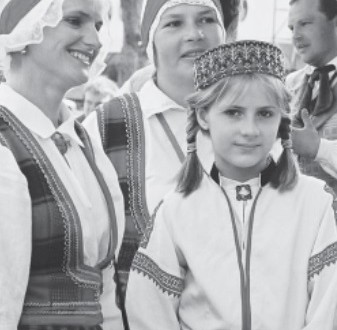BY JAMES M. BOUBONIS
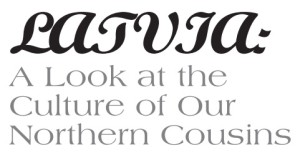
Lithuanians often refer to their northern neighbors as “the nation of brothers.” But how many similarities and differences can we find between the two countries?
THE CULTURE OF LATVIA BEARS A STRONG RE- semblance to that of its ethnic and linguistic sister to the south – Lithuania. But there are enough significant differences as well as parallels that a case study has ample material for comparison between the two. We will look at Latvian history, religion, arts, cuisine, folklore, and worldview, and will examine the differences and the parallels between the two sister cultures.
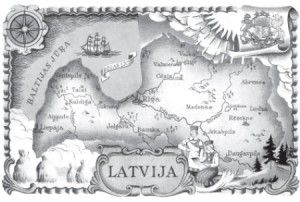
The Balts
When I mention “Baltic Culture” or “The Balts,” I am referring mainly to Lithuanians and Latvians, the only remnant of an ancient ethnic group that spoke an early Indo-European language which is best represented now by Lithuanian, an archaic language in comparison with the more modern Latvian language. These people migrated to the shores of the Baltic Sea about 4000 years ago. Historians disagree on their proto-motherland, though linguists tend to place it in east or southeast Europe and the Caspian Sea area. Some linguistic historians have linked Lithuanian and Latvian to Sanskrit, the dead language from which Hindi and other modern Indian languages evolved. Some Baltic historians lend credence to this theory, citing the central European methods with which the early Balts buried their dead, and the clothing and jewelry found in ancient Baltic graves; others scoff at the idea, and say that the linguistic resemblance with Sanskrit is only coincidental.
The aforementioned theory regarding the Balts’ eastern origins is the strongest among historians and linguists, though there have been others that enjoyed popularity for a time, only to be discarded later. Various historians and linguists, some of them Baltic, and many of them amateurs, were misled by a few examples of loan words from other languages, or misinterpreted artifacts, that the Balts were related to the Romans, Greeks, Thracians, Phrygians, Persians, Hittites, Slavs, or Germanic tribes. In truth, the theory of linguistic relation to ancient Sanskrit and the peoples who spoke it has yet to convince many historians; but the connections between Lithuanian/Latvian and Sanskrit make a stronger case than any of the other evidence.
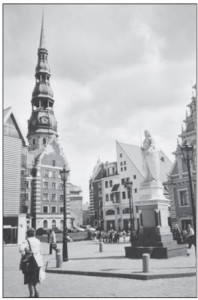
“The Baltic States” is a geopolitical term that includes Estonia as well as Lithuania and Latvia. While Estonia rightfully takes place with the other two countries for its fight for freedom from Sovietism, and has always shared security concerns regarding the eastern shore of the Baltic Sea with its two sister states to the south, we do not culturally include them as “Balts” for the purpose of this article, as their language (of the Finno-Ugric language family) and culture are closely related to those of their neighbors in Finland.
Baltic languages
Lithuanian and Latvian belong to the Baltic or Satem Branch of ancient Indo-European languages. The only other member of that language group was Old Prussian, which died out in the seventeenth century; Old Prussia, or Prusija, was chiefly in the area southwest of Lithuania now Russified and renamed the Kaliningrad Oblast.
That the languages derive from the same root is obvious. Compare Lithuanian and Latvian in these common words:
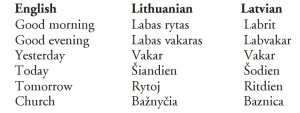
The similarity is more than superficial, as nearly every word in the one language (not including loan words from third languages) is similar or the same in the other language. But most linguists agree that Lithuanian is the more archaic of the two, resembling closely the ancient language spoken by the Indo-European race. Latvian is by comparison a modern derivative.
Paganism to Catholicism and Lutheranism From the earliest artifacts found so far of the early Balts, it is apparent that they carried an animistic pagan religion from their mysterious origins to their new homeland on the Baltic Sea. The Baltic indigenous religion has been carried forward to this day, and indeed, lacking the restrictive hand of the Soviet authorities, is practiced openly now, though still a minority religion.
In both Latvian and Lithuanian forms of the Baltic pagan religion – known among its adepts as Romuva or Ramuva in Lithuania and Dievturiba in Latvia – are found basically the same assemblage of deities, and with very similar names, all having originated from the same ancient belief system. The belief is not so much dogma or a set of rules but a way of life, a striving to live in harmony with nature and fellow man. Lacking any holy writ or code, the belief has been passed down through the ages via repetition of various dainos, or folksongs. Resembling somewhat the beliefs of many American indigenous tribes, the aim of Romuva or Dievturiba is to honor the gods through harmonious lifestyle.
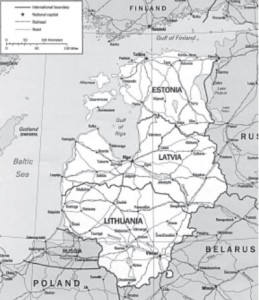
One of the main ideas of Dievturiba is to shift from seeking to dominate to seeking to cooperate. It is regarded useless to come to the point of violence over an issue that can be resolved through mutual compromise. Evidently, the early rulers of Latvia and Lithuania tolerated competition from other religions, even permitting Christian missionaries to preach and seek converts. But once the line of non-tolerance had been crossed by missionaries, in other words, refutation of the pagan religion, then non-tolerance was returned by the Balts, usually resulting in the death of the offending missionary.
The pagan religion of the Balts included holidays such as the summer solstice, Jani in Latvian and Rasa or Joninės in Lithuanian; winter solstice; and the spring and autumn equinoxes. Fire was always present at rituals, and the ancient Baltic priests and vestal virgins kept continual fires burning in the holy places. Holy objects and animals included oak trees; the sun, moon, and sea; boulders, and especially water that collects in their crevices; snakes, representing life; and toads, representing regeneration of life.
Deities included (in Latvian, then Lithuanian) Zeme/ Žemė, goddess of the Earth – adherents bless her at waking and at bedtime, symbolizing the emergence from the earth at the beginning of life, and the return to it upon death; Saule/Saulė, the sun, the wife or daughter of heaven; Perkons/Perkūnas, god of thunder and justice; Dievs/Dievas, all-encompassing god of light and sky, peace, and agreements; and Velns/Velnias, literally “devil,” god of the underworld and the kingdom of the dead, magic, and metamorphosis.
The Vatican apparently could no longer tolerate this pagan presence in Europe, and sought to convert the Balts to Christianity. It was only on the third try that a Papal emissary to the Latvians succeeded in gaining many “converts” to Christianity, if that word can be used to describe adherents by force. The Latvians, Lithuanians, and Old Prussians were all stubbornly devoted to their ancient pagan religion, a devotion that would cost the Prussians their culture and language as the encroaching German Catholics first took their lands by invasion, then took the name of Prussia as their own, and established their capital as Koenigsberg.
The first attempt to convert the Latvians to Christianity was conducted by a missionary accompanying some German traders on their regular rounds to Latvia during the 1160s. Pope Clement III had sent a priest named Meinhard to catechize the pagans, later even consecrating him as bishop in vain hopes of elevating his status among the Latvians. Meinhard had a castle built for the Latvians, hoping that this would interest more of them in his Christian god. They appreciated the castle, but Meinhard died of old age in 1196 having converted precious few of the Latvian “heathen.”
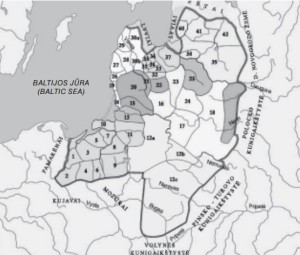
The first crusade against the Latvians – then known abroad as the Livs, the name of the foremost tribe in the region living along the shores of the Baltic Sea – was ordered by the ambitious Pope Innocent III in 1198, the first year of his papacy. He replaced the deceased Meinhard with a Cistercian monk named Berthold, consecrated him bishop, and sent him with a contingent of soldiers to convert the Latvians, who killed him within a year of his arrival. The Balts did not take kindly to the idea of religious conversion by the sword.
In 1200, Innocent III sent yet another German bishop, Albert, to Latvia, this time accompanied by 23 ships and 500 Saxon soldiers. Thus began the second crusade into Latvia. Albert promptly took a group of Liv elders hostage to force the Latvians into accepting his demands. Though this is obviously not the preferred method of spreading Christianity as described in the New Testament’s book of the Acts of the Apostles, Albert succeeded in his political ambitions regarding Latvia, and indeed was to be the founder in 1201 of Riga, Latvia’s capital to this day. Possibly this string of events is what set the pace for Latvians being somewhat more accepting of foreign influence than their Baltic brethren. Lithuania’s capital of Vilnius, by contrast, was founded upon order of a Lithuanian pagan king, Gediminas, whose dream of a howling iron wolf was interpreted by a pagan sorcerer as indicating where Gediminas should build his city.
As Latvia already had a sizable German presence in 1517 when Martin Luther posted his Ninety-Five Theses, Reformationist ideas crept into Latvia during the 1520s via the German community. Eventually this movement grew to the point where Lutheranism replaced Catholicism as the chief creed of the land. By the twentieth century, 55% of the Latvian population was Lutheran, 25% Catholic, 9 % Orthodox, and 5% Jewish.
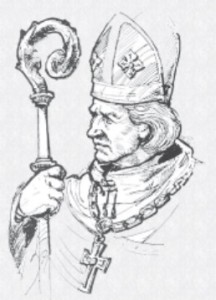
As Lithuania never had the German domination that Latvia experienced (except for the city of Memel/Klaipėda on the northwest coast), but went under Polish intellectual influence by the time of the Reformation, Protestantism is a minority religion in Lithuania, the country remaining overwhelmingly Roman Catholic. The composite of religious groups in Lithuania is, in order, Roman Catholic, Russian Orthodox, Evangelical Lutheran, Judaic, then others including the Karaim Islamic community and Romuva.
Folk customs and superstition
Though Christianity in one form or another is the dominant religion in both Latvia and Lithuania, the ancient pagan religion remains in the cultural worldview of both nations. For instance, even among ardent Catholic families it is common in Lithuania to find carved wooden devils adorning the yard or a nook in the home. While many modern Balts dismiss this as simply a curious cultural heritage – belief in devils and fairies – many still regard these carved devils as a good luck charm. The folk legends regarding devils say that they are all around, are likely to take abode somewhere on your property, and though they are tricksters, are relatively harmless, simple, easily duped, and can actually help protect your property. Having a stork nest on your property is considered good luck, a sign that a good man lives there. Disturbing a stork’s nest, or disturbing snakes or toads unnecessarily, brings bad luck.
Modern Balts also perpetuate superstitions, both those bred in the Baltic countries and those borrowed from other lands. To this day, when walking or driving down a road, if a black cat crosses your path in those countries, many consider it bad luck to continue on that path; better to circumnavigate by another route even if it means taking you miles out of the way.
Upon meeting my relatives in Lithuania, one of the first questions they asked was what my zodiacal sign is and which animal represents me on the Chinese zodiac. For some reason they were fascinated by the fact that I’m a Sagittarius rat.
One custom common in that region is to avoid reaching across a threshold. When visiting friends there, upon their opening the door for your entry you must wait until you step inside the house before offering any handshakes, kisses or hugs, or handing over a gift.
Flowers are popular gifts in both Latvia and Lithuania, both for the living and the dead. In Latvia, bouquets in red and white are popular, as those are the colors of the nation’s flag. In Lithuania, of course, bouquets for the living must contain an odd number of flowers, even numbers being only for putting on graves!
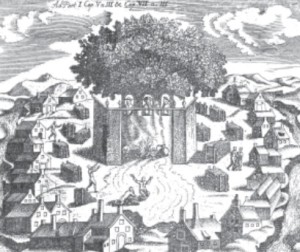
Beliefs concerning the communion of the dead with the living, especially with relatives, abound in both countries. Leaving footprints after leaving a place where the living meet with the dead, as a cemetery, funeral, or churchyard, is avoided as it is believed that the dead may follow you home. In Latvian cemeteries where the footpaths are of sand or gravel, the paths are carefully raked to erase the footprints after a visit to a grave.
History since the 13th century
Though some Baltic tribes were first subjugated by the Vikings in the ninth century, the first substantial political oppression of the Balts occurred when the Latvians (more specifically, the tribe of the Livs inhabiting the coast) were dominated by the Germans, starting in the early thirteenth century. Latvians were permitted to labor in unskilled, semi-skilled or artisan trades, but the merchant and professional classes were reserved for the Germans living among them; the Latvians did not enjoy equal footing with their conquerors.
The Knights of the Sword and the Knights of the Teutonic Order conquered Latvia by 1230, and German rule lasted for three centuries, after which the country was partitioned among the Lithuanians and the Swedes.
By the end of the eighteenth century, however, Tsarist Russia’s expansionist designs had led to the annexation of Latvia, and though German landowners still retained their rights, the land was ruled by the Tsar’s governors.
The Latvians’ Lithuanian cousins to the south experienced similar hardships, with the exception that the Lithuanians had been able to repel the German invaders. When Lithuania was finally Christianized, it was as much a decision to acquiesce as it was forced by Germanic knightly orders. But for some time during the fourteenth and fifteenth centuries, Lithuania under Vytautas the Great ruled an area larger than any other European empire at that time.
During the raging politics of the 1930s between ultranationalism developing in Germany and socialist pressures from Soviet Russia, Latvia and Lithuania were tossed like two small boats in a storm. In 1939, both countries were forced to accept the presence of Soviet troops in their territory. Both were then occupied and annexed to the Soviet Union in 1940, resulting in the restriction of rights, endless bombardment with atheist Soviet propaganda, and deportations to Siberia. In 1941, Nazi Germany drove out the Soviet troops and inflicted their own cruel regime until the Soviets returned and drove out the Wehrmacht in 1944.
From 1944 until 1990, Latvia and Lithuania (along with Estonia and most Central/Eastern European countries), were subjected to the totalitarian Soviet regime. The Baltic culture is a freedom-loving one, and the Balts had spent centuries under the dominion of various invaders. The independence of 1918 through 1940 was still a fairly recent memory, and the Balts could not tolerate the thought of more misery under a foreign regime.
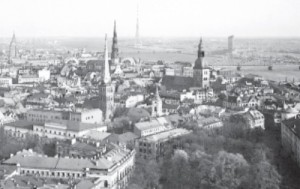
The Latvian partisan war against the Soviet invaders lasted from 1944 to 1956, involving about 20,000 partisans, about half of whom were full-time warriors. Though the partisans scored some early victories, the Soviets eventually gained the upper hand, having comparatively endless resources. Meanwhile, when 43,000 Latvian citizens were deported to Siberia in March 1949 (out of a total population of a little over two million), mainly from partisan-inhabited areas, the partisans’ supply chain dried up. That, and the attrition of the freedom fighters from combat casualties, caused the eventual collapse of the Latvian armed resistance.
The Lithuanian armed resistance lasted about the same amount of time, ending in 1953, but was rather more intense, partly because of the larger Lithuanian population of about four million. As Lithuanian resistance was stiff from the outset – the Baltic states having had experience organizing resistance during the first Soviet occupation and the Nazi occupation – the Soviet authorities clamped down immediately, deporting 60,000 Lithuanians in 1945 alone.
In all, approximately 320,000 Lithuanians were deported to hard-labor camps in the Soviet Union in 1941 and during 1945–1950. 20,000 Lithuanian farmers were executed by Soviet forces for having supported partisan troops, and somewhere over 20,000 Lithuanian partisans were killed.

After armed resistance against the Soviet oppression had been deemed futile by the Baltic peoples, unarmed resistance continued in the form of underground press, religious commitment in defiance of Communist Party policy, and petty acts of sabotage. In the late 1980s, Mikhail Gorbachev relaxed Soviet social restrictions with his programs of glasnost (openness) and perestroika (restructuring), which in turn opened the floodgates of activity toward independence in the Baltics. By 1991, Latvia and Lithuania were free again.
Music and dance
Latvian traditional music utilizes many of the same folk instruments and song styles as Lithuanian music. Instruments common to both cultures include the zither (Latvian kokle, Lithuanian kanklės), violin, string bass, and various indigenous percussion instruments used for their sound effects. In both countries, folksongs are often performed and recorded by folkloric ensembles who perform the native dances as well.
The Balts are music-loving people, their culture founded upon folksongs (Latvian dainas, Lithuanian dainos) that are used to mark life’s main events. Baltic dance music includes lively polkas and waltzes, which of course are not originally Baltic in origin. Dance movements are in the style to be expected of northern, European, and agrarian-based cultures. No swaying, hypnotic lateral movements with descriptive hand movements as one finds in the traditional dances of tropical cultures such as Hawaii or the Philippines; nor do the Balts dance with the shoulder-bouncing, hip-gyrating motions of African tribes. Like traditional German, Polish, Russian, or Scandinavian folk dances, Baltic dance movements are primarily horizontal, with nearly all motions executed in the legs, the arms used mainly for clapping or for encircling one’s partner.
Thematic content of traditional American folk music, as practiced by the descendants of white settlers, deals mostly with the commerce of the day. Think of all the old railroad, barging, mining, sailing, cowboy, and logging tunes. Some folksongs dealt with unrequited love or romance, while many tunes were simple country dances. The content of both Latvian and Lithuanian traditional folksongs, however, harkens back further to the pagan ancestry. While many were farmers’ work songs that were sung by large groups of people performing the annual planting or harvest – and therefore could be said to resemble the Negro spirituals of the old American South – many others deal directly with the miracles of nature, glorifying the sun or the fertility of the earth. Among traditional Latvian songs can be found titles from these two categories, such as Two Doves Ran in the Sky, Dark Night Green Grass, Call Out Dear Cuckoo Bird, Breaking Flax, The Sun Moves Quickly, Song of the Wind, and The Forest Shook From Dancing. Also common among both cultures, and opposite to American culture (except where borrowed from European cultures as with In Heaven There is No Beer and Beer Barrel Polka), are drinking songs like the Latvian songs Brothers, Let’s Sing Together and Beer Drinkers Have Barley Growing; and the Lithuanian songs Pripilk Alaus, Pridrėbk Medaus (Pour the Beer, Splash the Mead) and Skanus Alus, Balta Puta (Tasty Beer, White Foam). Most Baltic beer-drinking songs are alike in that the entertainment effect comes mainly from the storytelling in the lyrics, usually sung by voices wandering endlessly in parallel thirds over a repetitive melody.
Songs from the Christian era also abound, such as Christmas Masquerade (Latvia) and various religious songs and hymns circulated around the region.
All types of music found in most other nations are also represented in Latvia and Lithuania. Jazz is popular in Riga and Vilnius; there are jazz concerts and festivals, and homespun jazz recordings.
Rock music is also popular among Baltic youth; Lithuania’s favorite acts include the band “Biplanas” (“Biplane”) and heartthrob singer Andrius Mamontovas. In Latvia one of the best-selling groups is “Skyforger” (note the choice of English title), a heavy-metal trio. But Latvian heavy metal comes with a twist: one of “Skyforger’s” most popular CDs is titled Latviešu strelnieki – Latvian riflemen. The CD contains such titles as (in English translation) The March of 1916, Colonel Briedis, Be Like a Man, and In Life’s Darkest Hour, all dedicated to “our forefathers & Latvian riflemen who have spilled their blood upon this ground for its freedom” and “mighty Ancient Gods who keep watching us from above.” Both Baltic countries have of course also produced modern classical composers, such as Latvia’s Peteris Vasks (b. 1946), and Lithuania’s Mikolajus Konstantinas Čiurlionis (1875-1911) and Bronius Kutavičius (b. 1932). Here too we find an affinity with nature and connections to early Baltic paganism as well as nationalism, shown in such works as Vasks’ Latvija, Mate Saule (Mother Sun), Vasara (Summer), Ziles Zina (Message of a Bird), and Mūsu Dziesma (Our Song); Čiurlionis’ Jūra (The Sea), Miške (In the Forest), and his arrangements of Lithuanian folksongs.
Cuisine, arts and crafts
Baltic cuisine features traditional dishes including heavy use of potatoes, cream, smoked bacon and other heavy meats, cheeses, beets, cabbage, sausages, onions, dark breads, garlic, mushrooms, and especially lots of herring! A buffet table at a Latvian banquet will be loaded with foods very similar to a buffet table at a Lithuanian event. The tastes and recipes are common to the whole region; most of the aforementioned foods are also found, in various forms, in Poland, Germany, Belarus, Estonia, Ukraine, and Russia. Sweets are common, especially chocolates (a flavor obviously imported from other cultures, as cocoa trees would perish in the chilly Baltic winters), including liquor-filled chocolates.
Beer is popular in the Baltics, though brewing is generally not as well developed as in Belgium or Germany. But liquor is a specialty in Lithuania; vodka was invented and perfected in Lithuania, and mead (honey wine) and mead liquor are traditional Lithuanian libations.
Woven fabrics are commonly found as folk crafts in both countries, used in traditional costumes, as wall decorations, and as tablecloths, runners, and napkins. Though these are often dyed, the natural flaxen color is often chosen.
Woodworking is a pride in both countries; pictures and geometric designs are commonly found, made by juxtaposing two or more different-colored pieces of wood in an inlaid pattern to form the image of a medieval castle, landscape, or pleasing symmetric pattern. In fact, geometric designs have been favored among the Balts since the prehistoric ancestors of modern Latvians and Lithuanians arrived over 4000 years ago. Among the relics from that period dug up by archeologists, not only clothing and jewelry are decorated with geometric patterns, but even the most practical implements as well. In Lithuania one will find many roadside shrines showing a cross or a pensive Christ; wooden lawn sculptures are also popular, devils being one of the most commonly chosen subjects.
In the Diaspora
Many people fled Latvia and Lithuania toward the end of World War II, when the Soviets were chasing out the Germans. They had suffered one Soviet occupation, then an equally brutal Nazi occupation; tens of thousands preferred leaving their beloved homelands to facing yet another Soviet occupation. Others escaped after annexation, from the renamed Soviet Republics of Latvia and Lithuania. After regaining independence in 1990, most Balts who leave do so to find better pay, as poverty and low wages are still serious problems in Eastern and Central Europe; freedom is no longer the issue. But the many who left in the name of freedom illustrate the fervent Baltic beliefs in individual rights.
One such man was Nikolajs Kampars, who earned his law diploma at the University of Riga in Latvia and practiced law there, but fled to the West around 1950. Kampars evidently preferred freedom to the perks of professional life in the Soviet Union, for he worked as a baker in Milwaukee until his death in 1972. Yet his intellect did not go to waste, as he was an acknowledged chess expert, was City Champion in 1955, and published his own chess magazine for five years. Some of his games have been annotated by chess grandmasters.
The flight to freedom carries a double meaning for Balts. Flying, especially in small propeller planes, is a popular avocation for those who can afford it. Tiny Latvia, with only a little over two million residents, boasted its own pilots’ magazine for 10 years. Lithuanians also love flying; stunt pilot Jurgis Kairys, born in 1952 in a deportee labor camp in Siberia, is a national hero. Past President Rolandas Paksas is also a stunt pilot. But the grand heroes of Lithuanian aviation are Steponas Darius and Stasys Girėnas, two Lithuanian-born American aviators who planned to imitate Charles Lindbergh’s transatlantic flight by flying from New York to Kaunas nonstop. They left New York in their plane, the “Lituanica,” on 15 July 1933, but unfortunately crashed in a German forest, only a few hundred miles short of their goal, and died. They are now honored on Lithuania’s 10-litas note, worth about $3.60.
Is the Balts’ love of flight akin to their fierce longing for independence and freedom?
Balts also thrive in the diaspora in every imaginable profession. Latvians and Lithuanians can be found in Western countries in the medical and legal fields, engineering, academe, performing arts, etc. Whether a Latvian or Lithuanian moving to a Western country decides to become as Western as possible, or seeks to preserve as much Baltic tradition as possible, of course depends on the individual. But it will be fascinating to watch as more Latvians and Lithuanians than ever before move to other countries – will Western society fully absorb them, or will Baltic individualism prevail, and leave some small permanent imprint upon Western society?
 DRAUGAS NEWS Lithuanian World Wide News in English
DRAUGAS NEWS Lithuanian World Wide News in English
